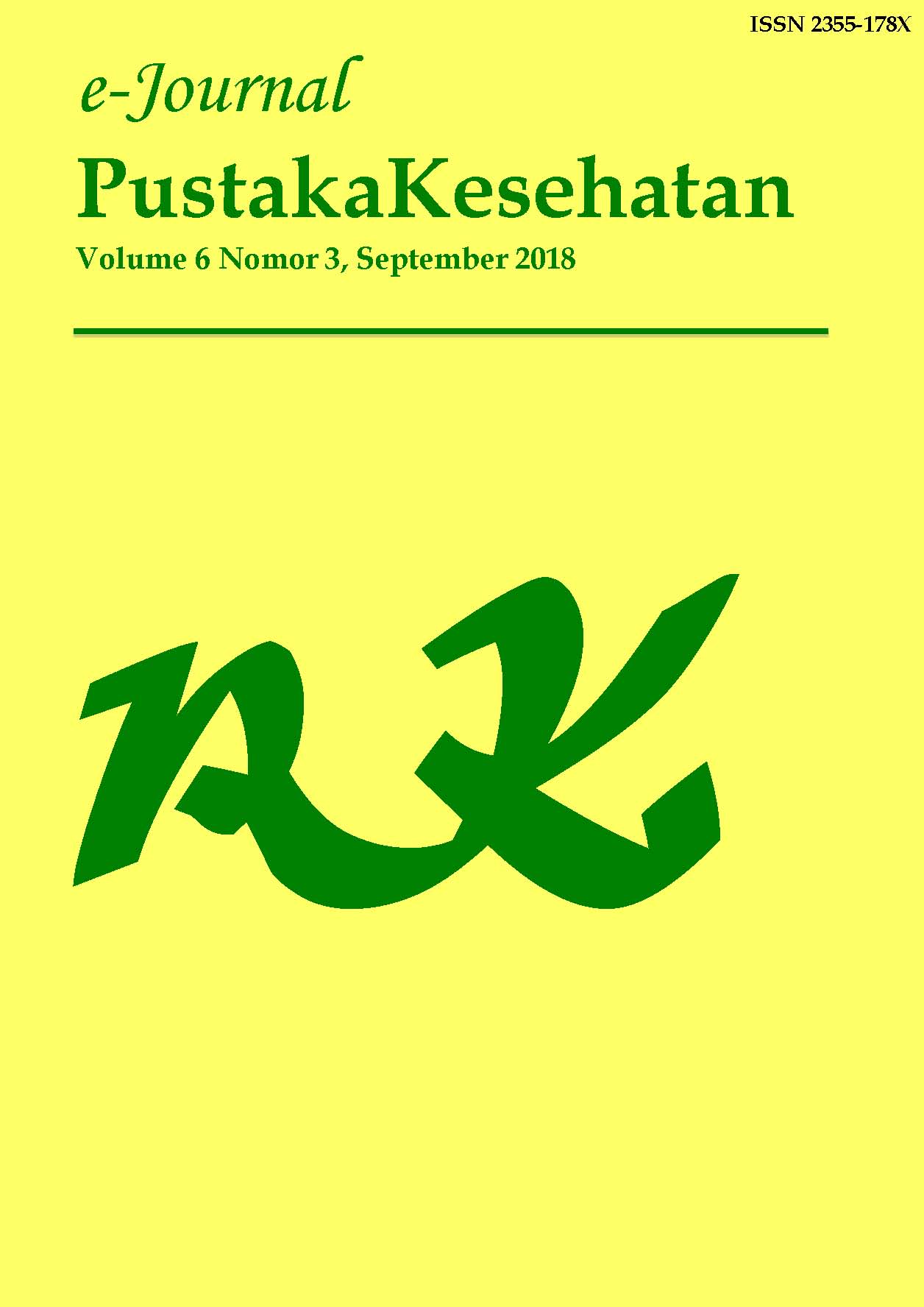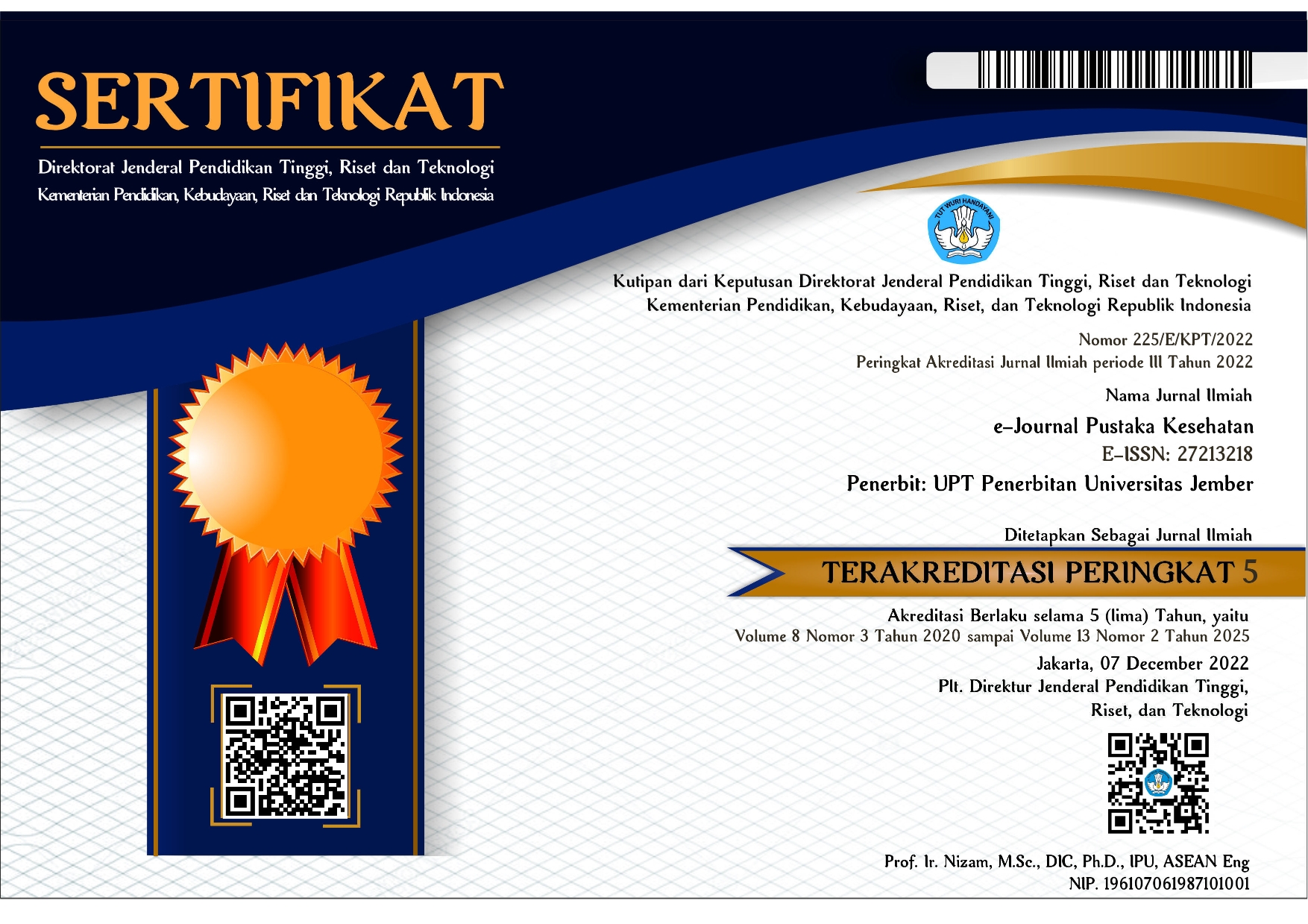Perbandingan Komplikasi dan Keluaran antara Persalinan Pervaginam dan Seksio Sesaria pada Ibu dengan Riwayat Seksio Sesaria di RSD dr. Soebandi Jember
Abstract
The number of cesarean section in Indonesia is 9,8% and approaching cesarean limit suggested by WHO which is 10%. The most common reason for cesarean section is prior cesarean. Cesarean section has higher maternal mortality risk compared to vaginal delivery. Vaginal delivery with prior cesarean has higher complication risk compared to cesarean section. Maternal complications and neonatal outcomes are important to decide delivery methods. Maternal complications that can be compared are postpartum infection, postpartum hemorrhage, and uterine rupture. Neonatal outcomes that can be compared are APGAR score and neonatal birth injury. This study aimed to compare maternal complications and neonatal outcomes between vaginal delivery and cesarean section in women with prior cesarean section. There was a significant difference in the incidence of postpartum infection (p=0.01) and neonatal birth injury (p=0.05). There was no significant difference in APGAR score and the incidence of postpartum hemorrhage. There was no uterine rupture observed. In conclusion, vaginal delivery is a viable option for pregnant woman with prior cesarean.
e-Journal Pustaka Kesehatan has CC-BY-SA or an equivalent license as the optimal license for the publication, distribution, use, and reuse of scholarly work. Authors who publish with this journal retain copyright and grant the journal right of first publication with the work simultaneously licensed under a Creative Commons Attribution-ShareAlike 4.0 International License that allows others to share the work with an acknowledgment of the work's authorship and initial publication in this journal.











